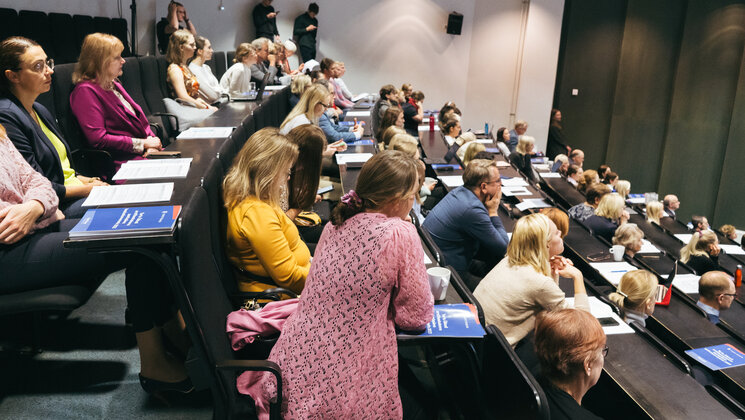-
Faculty of Arts and HumanitiesDean's Office, Faculty of Arts and HumanitiesJakobi 2, r 116-121 51005 Tartu linn, Tartu linn, Tartumaa EST0Institute of History and ArchaeologyJakobi 2 51005 Tartu linn, Tartu linn, Tartumaa EST0Institute of Estonian and General LinguisticsJakobi 2, IV korrus 51005 Tartu linn, Tartu linn, Tartumaa ESTInstitute of Philosophy and SemioticsJakobi 2, III korrus, ruumid 302-337 51005 Tartu linn, Tartu linn, Tartumaa EST0Institute of Cultural ResearchÜlikooli 16 51003 Tartu linn, Tartu linn, Tartumaa EST0Institute of Foreign Languages and CulturesLossi 3 51003 Tartu linn, Tartu linn, Tartumaa EST0School of Theology and Religious StudiesÜlikooli 18 50090 Tartu linn, Tartu linn, Tartumaa EST0Viljandi Culture AcademyPosti 1 71004 Viljandi linn, Viljandimaa EST0Professors emeritus, Faculty of Arts and Humanities0Associate Professors emeritus, Faculty of Arts and Humanities0Faculty of Social SciencesDean's Office, Faculty of Social SciencesLossi 36 51003 Tartu linn, Tartu linn, Tartumaa EST0Institute of EducationJakobi 5 51005 Tartu linn, Tartu linn, Tartumaa EST0Johan Skytte Institute of Political StudiesLossi 36, ruum 301 51003 Tartu linn, Tartu linn, Tartumaa EST0School of Economics and Business AdministrationNarva mnt 18 51009 Tartu linn, Tartu linn, Tartumaa EST0Institute of PsychologyNäituse 2 50409 Tartu linn, Tartu linn, Tartumaa EST0School of LawNäituse 20 - 324 50409 Tartu linn, Tartu linn, Tartumaa EST0Institute of Social StudiesLossi 36 51003 Tartu linn, Tartu linn, Tartumaa EST0Narva CollegeRaekoja plats 2 20307 Narva linn, Ida-Virumaa EST0Pärnu CollegeRingi 35 80012 Pärnu linn, Pärnu linn, Pärnumaa EST0Professors emeritus, Faculty of Social Sciences0associate Professors emeritus, Faculty of Social Sciences0Faculty of MedicineDean's Office, Faculty of MedicineRavila 19 50411 Tartu linn, Tartu linn, Tartumaa ESTInstitute of Biomedicine and Translational MedicineBiomeedikum, Ravila 19 50411 Tartu linn, Tartu linn, Tartumaa ESTInstitute of PharmacyNooruse 1 50411 Tartu linn, Tartu linn, Tartumaa ESTInstitute of DentistryL. Puusepa 1a 50406 Tartu linn, Tartu linn, Tartumaa ESTInstitute of Clinical MedicineL. Puusepa 8 50406 Tartu linn, Tartu linn, Tartumaa ESTInstitute of Family Medicine and Public HealthRavila 19 50411 Tartu linn, Tartu linn, Tartumaa ESTInstitute of Sport Sciences and PhysiotherapyUjula 4 51008 Tartu linn, Tartu linn, Tartumaa ESTprofessors emeritus, Faculty of Medicine0associate Professors emeritus, Faculty of Medicine0Faculty of Science and TechnologyDean's Office, Faculty of Science and TechnologyVanemuise 46 - 208 51003 Tartu linn, Tartu linn, Tartumaa ESTInstitute of Computer ScienceNarva mnt 18 51009 Tartu linn, Tartu linn, Tartumaa ESTInstitute of GenomicsRiia 23b/2 51010 Tartu linn, Tartu linn, Tartumaa ESTEstonian Marine Institute0Institute of PhysicsInstitute of ChemistryRavila 14a 50411 Tartu linn, Tartu linn, Tartumaa ESTInstitute of Mathematics and StatisticsNarva mnt 18 51009 Tartu linn, Tartu linn, Tartumaa EST0Institute of Molecular and Cell BiologyRiia 23, 23b - 134 51010 Tartu linn, Tartu linn, Tartumaa ESTTartu ObservatoryObservatooriumi 1 61602 Tõravere alevik, Nõo vald, Tartumaa EST0Institute of TechnologyNooruse 1 50411 Tartu linn, Tartu linn, Tartumaa ESTInstitute of Ecology and Earth SciencesJ. Liivi tn 2 50409 Tartu linn, Tartu linn, Tartumaa ESTprofessors emeritus, Faculty of Science and Technology0associate Professors emeritus, Faculty of Science and Technology0Area of Academic SecretaryHuman Resources OfficeÜlikooli 18, ruumid 302 ja 304 50090 Tartu linn, Tartu linn, Tartumaa EST0Area of Head of FinanceFinance Office0Area of Director of AdministrationInformation Technology Office0Administrative OfficeÜlikooli 17 (III korrus) 51005 Tartu linn, Tartu linn, Tartumaa EST0Estates Office0Marketing and Communication OfficeÜlikooli 18, ruumid 102, 104, 209, 210 50090 Tartu linn, Tartu linn, Tartumaa EST0Area of Vice Rector for Academic AffairsOffice of Academic AffairsUniversity of Tartu Youth AcademyUppsala 10 51003 Tartu linn, Tartu linn, Tartumaa ESTStudent Union OfficeÜlikooli 18b 51005 Tartu linn, Tartu linn, Tartumaa EST0Centre for Learning and TeachingArea of Vice Rector for ResearchUniversity of Tartu LibraryW. Struve 1 50091 Tartu linn, Tartu linn, Tartumaa ESTGrant OfficeArea of Vice Rector for DevelopmentCentre for Entrepreneurship and InnovationNarva mnt 18 51009 Tartu linn, Tartu linn, Tartumaa EST0University of Tartu Natural History Museum and Botanical GardenVanemuise 46 51003 Tartu linn, Tartu linn, Tartumaa EST0International Cooperation and Protocol Office0University of Tartu MuseumLossi 25 51003 Tartu linn, Tartu linn, Tartumaa EST0Area of RectorRector's Strategy OfficeInternal Audit Office
Doctoral defence: Priit Pauklin „Hemodynamic and Biochemical Characteristics of Patients with Atrial Fibrillation and Anticoagulation of ≥65-year-old Patients with Atrial Fibrillation in Estonia”
On December 8th Priit Pauklin will defend his thesis „Hemodynamic and Biochemical Characteristics of Patients with Atrial Fibrillation and Anticoagulation of ≥65-year-old Patients with Atrial Fibrillation in Estonia“.
Supervisoris:
Associate professor Priit Kampus, University of Tartu
Professor Jaan Eha, University of Tartu
Opponent:
Associate professor Peter M Nilsson, Lund University, University Hospital Malmö (Sweden)
Summary:
Atrial fibrillation (AF) is the most common cardiac arrhythmia worldwide, affecting 2-4% of the adult population. This arrhythmia significantly impairs the patient's quality of life and increases the risk of stroke by up to 5 times. Several risk factors for this arrhythmia are known, such as hypertension, diabetes, sleep apnea, and obesity. However, the complete pathophysiological and hemodynamic mechanisms related to this arrhythmia are not yet fully understood. Since a heightened risk of stroke is present in most patients ≥65 years old, continuous anticoagulant therapy is necessary for thrombus prevention. While studies globally have indicated underutilization of anticoagulant therapy, specific data for Estonia is lacking. In this doctoral thesis, both indicators related to the hemodynamics of blood pressure and biomarkers associated with inflammation, oxidative stress, and fibrosis were examined in AF patients and a control group. In addition to blood tests, hemodynamics of blood pressure were measured in patients with arrhythmias to assess changes related to central blood pressure and arterial stiffness. Patients were monitored for 1 year for recurrence of arrhythmias. Furthermore, the nationwide use of continuous anticoagulant therapy among AF patients aged ≥65 was investigated, evaluating medication coverage based on prescribed daily doses. It was found that despite similar blood pressure measurements taken from the arm, patients with arrhythmias had higher central blood pressure and pulse wave velocity, indicating greater arterial stiffness. Study participants exhibited higher levels of myeloperoxidase, high-sensitivity C-reactive protein, N-terminal pro-brain natriuretic peptide, and galectin-3. Elevated myeloperoxidase levels were associated with a higher risk of AF recurrence. The utilization of continuous anticoagulant therapy in Estonia is extremely low, with only 57.4% of the studied patients in 2019 and 44.5% in 2020 achieving ≥80% coverage based on issued anticoagulant therapy prescriptions.
Watch defence via Teams.
Doctoral defence: Priit Pauklin „Hemodynamic and Biochemical Characteristics of Patients with Atrial Fibrillation and Anticoagulation of ≥65-year-old Patients with Atrial Fibrillation in Estonia”

Novel wound dressings were developed as part of the doctoral thesis of the University of Tartu

Career conference „To new hights with a PhD degree!“

